For quilt designer and storyteller Becca Fenstermaker, creativity begins close to home, on her family’s cranberry farm in southern New Jersey. Surrounded by nature and family history, Becca transforms inspiration into beautifully personal quilts that reflect both her love of storytelling and her joy in the creative process.
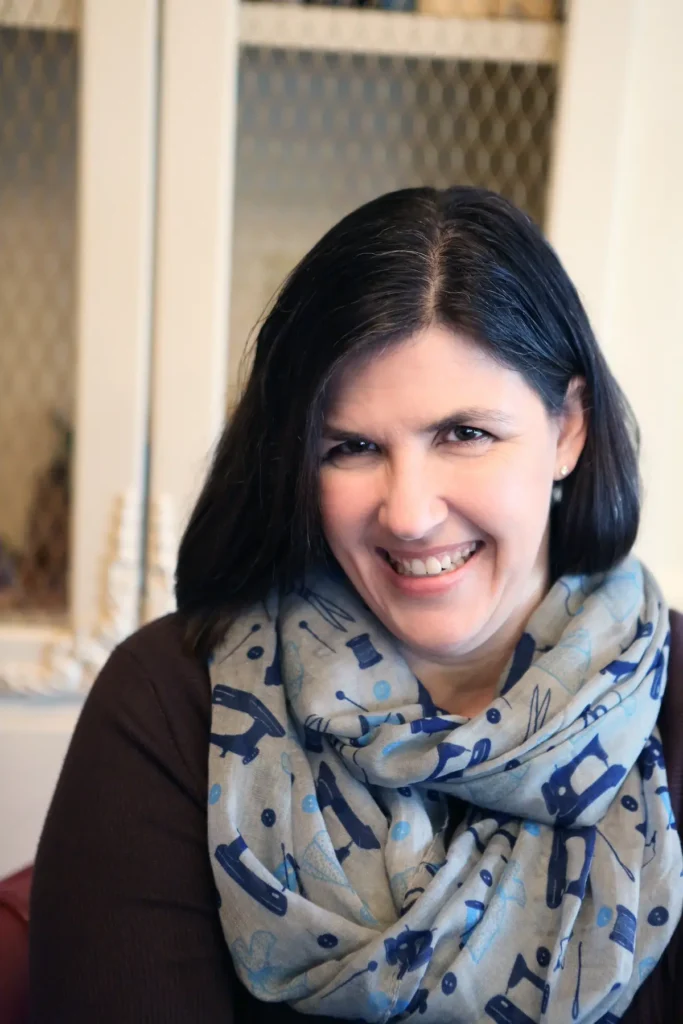
Share with us how you first got started quilting.
I taught myself to sew when I was pregnant with my first child, but I didn’t learn to quilt until 2011 after attending a guild show with my mom.
Seeing all of the possibilities—the designs, the fabrics—inspired me to seek out a beginner quilting class at a local quilt shop. I loved it from the start, in no small part because of an incredibly supportive and understanding teacher.
You grew up listening to your mom’s sewing machine. Does the sound of sewing machines evoke any special memories?
As an Amazon Associate I earn from qualifying purchases. Read more about our affiliate linking policy.
The sound of sewing machines soothes me.
It’s my favorite kind of white noise machine! It comforted me as a child to hear my mom nearby. It’s always been the sound of safety and security and coziness. Now it’s also the sound of friendship and companionship and creativity.
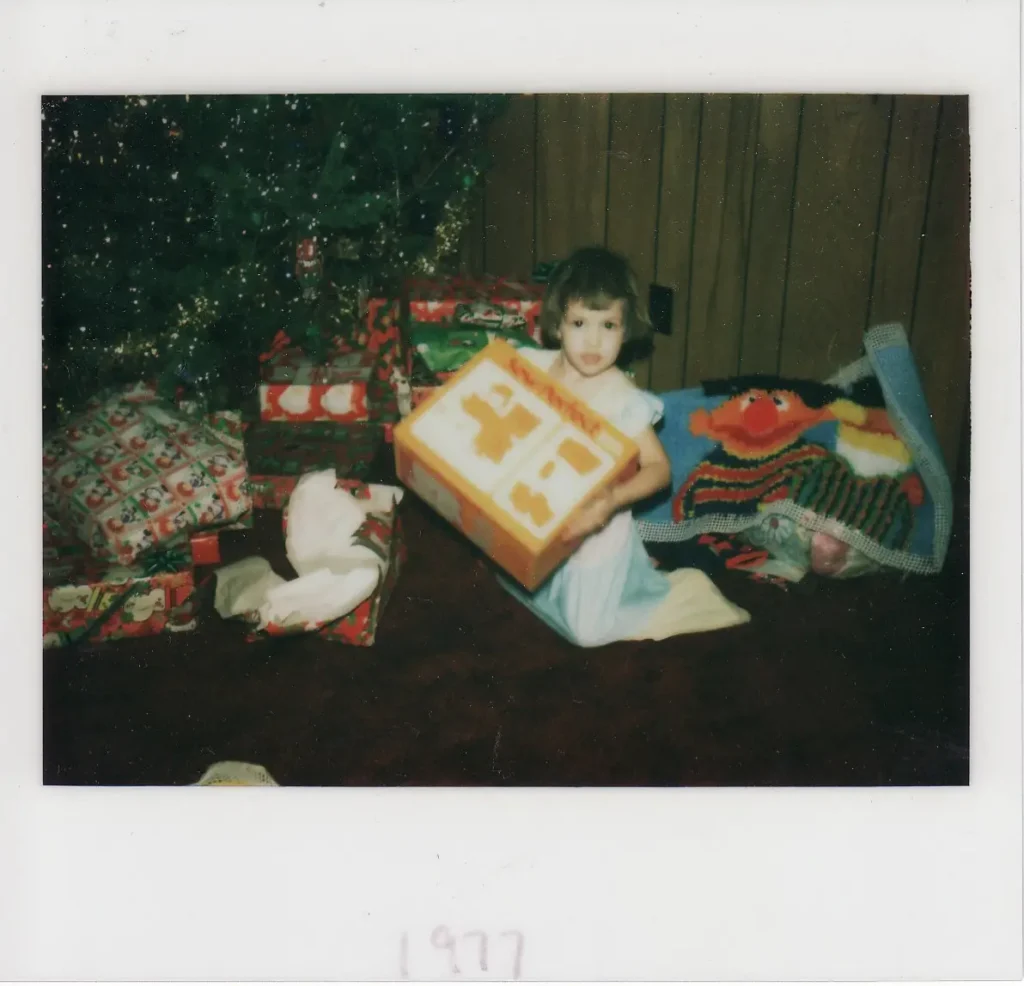
How does living on a cranberry farm in southern New Jersey inspire your creativity?
Living on a fifth-generation cranberry farm keeps me constantly inspired—by nature, by history, by family. Several of my patterns—like Meteor Watch, my first pattern—are at least partly inspired by the night sky, which is quite dark here (for New Jersey).

Trail Blazer came about after hiking part of a local trail with my husband.
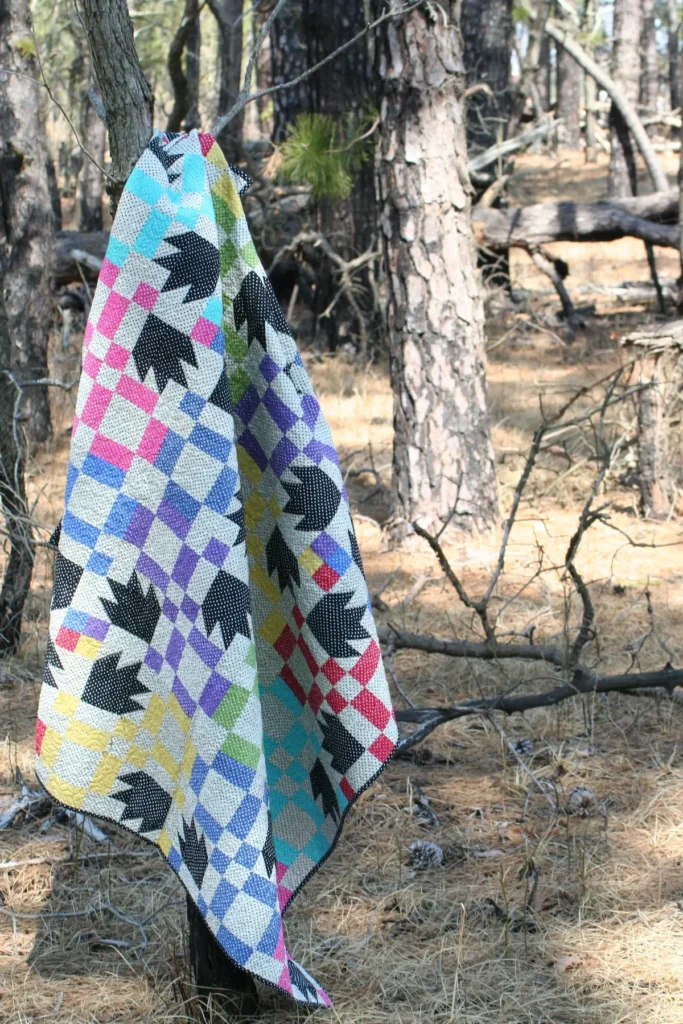
Madras About You started as a meditation on one of my grandfather’s shirts.
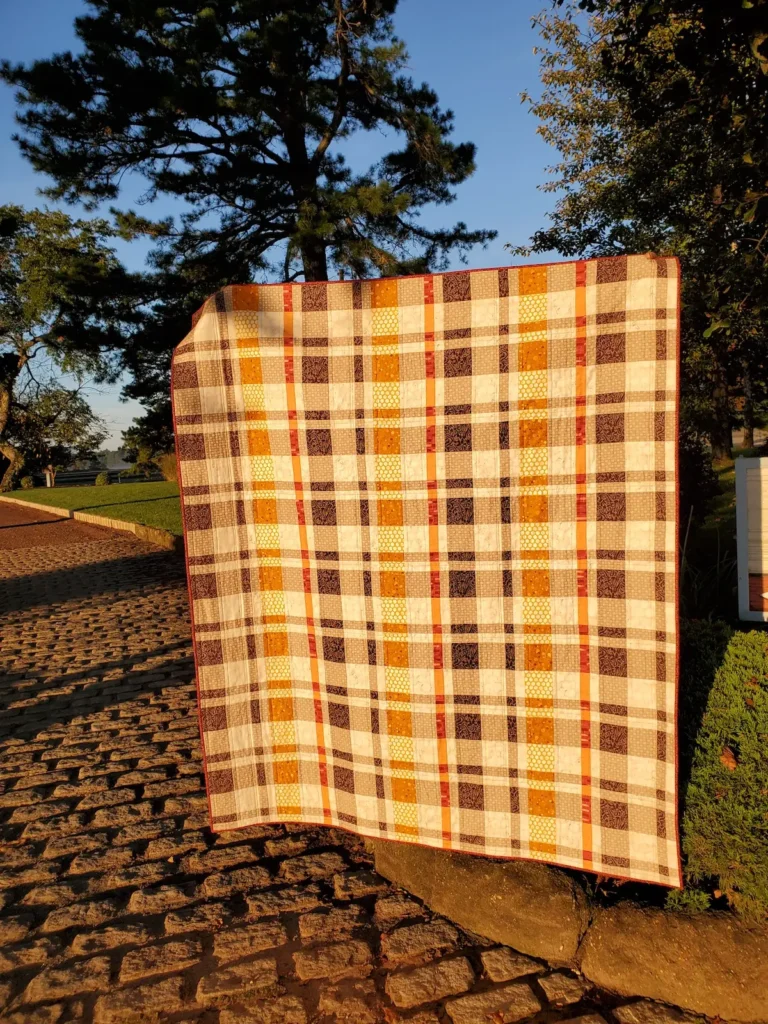
Water is a particularly important element in growing cranberries, and stewardship of that water was at the top of my mind when designing my latest quilt pattern, Speedwell (releasing soon). These inspirations shine through more clearly in my art quilts. My favorites are the most deeply personal and often spring from photos and slides, both old and new.
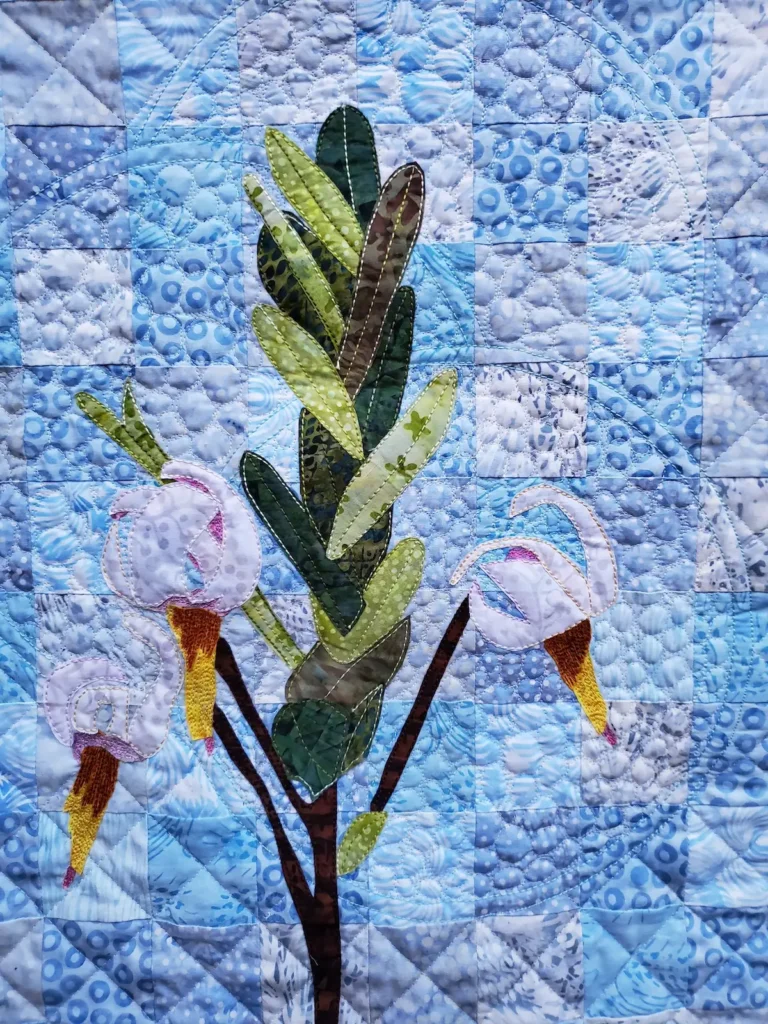
When did quilting become more than a hobby for you?
In 2016, I had started playing with the idea of selling items on Etsy and at local fairs, but I really, really hated making the same stuff over and over. I tried a couple of commissioned quilts, but felt stifled by the process.
Then I took the plunge and attended a conference called Sew Pro, which offered panels and lectures, and workshops for people interested in blogging and designing patterns and fabrics, and that sort of thing. It was an incredible experience!
A group of us from the conference organized our own blog hop later that year, and I created a wall hanging for it. People started asking for a pattern, and voilà! I had all the tools and information that I needed to do that, thanks to Sew Pro and a lot of new friends in the business.
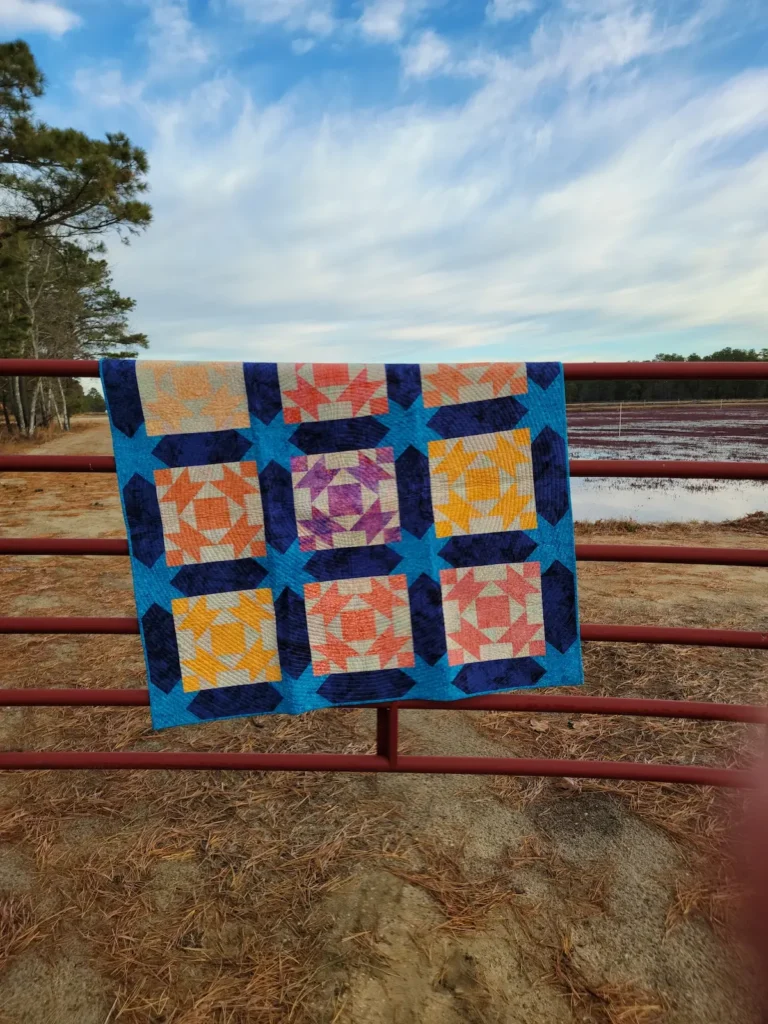
What role does storytelling play in your quilting process?
My favorite designs are the ones with stories behind them, even when they’re not apparent in the finished product. Often, the stories I tell myself will inform my decisions as I go along.
When I write a pattern, the story might determine the colors I choose or the name of the quilt. When I’m making something, almost every choice I make comes from the story I’m telling myself. I’ll never know if anyone else can figure out the story, which is part of the fun. I want quilters to tell their own stories, not mine.
Where do you find inspiration for your pattern designs?
Having a camera available on my cell phone is probably the biggest influence on my design process. Everywhere I go, I take pictures of color combinations and interesting designs and unusual patterns. I may never look at those photos again, but the images are all simmering away in the back of my head.
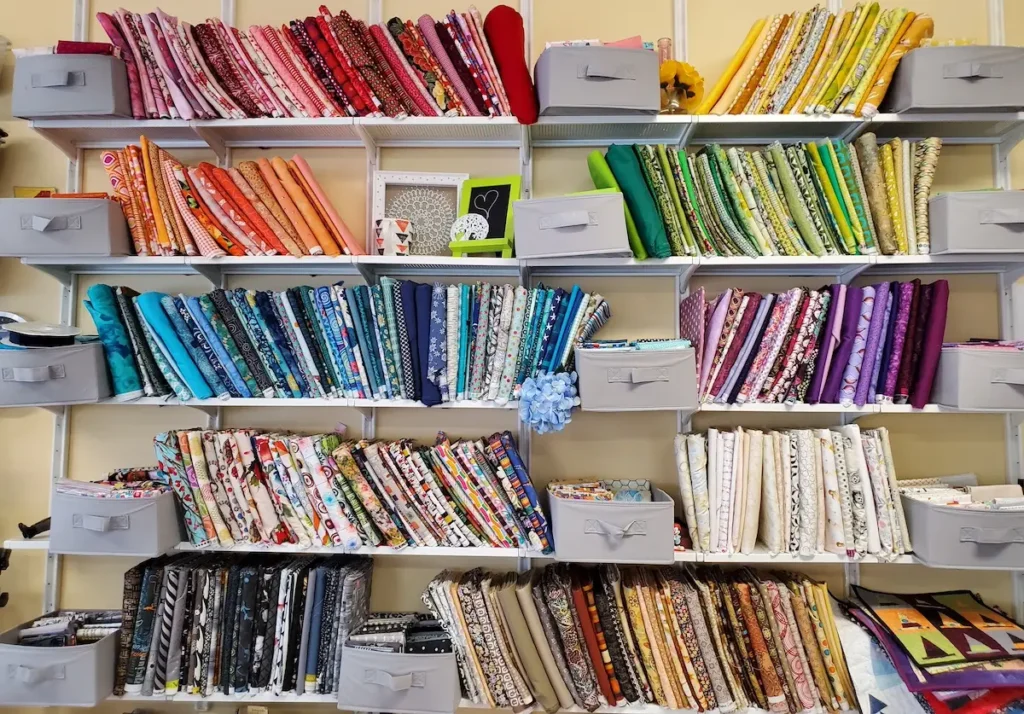
Describe your creative space.
My creative space is usually a disaster area. I’m truly terrible about organizing leftover pieces of fabric and batting! However, I’m lucky to have a converted attached garage exclusively dedicated to sewing. There are lots of windows and high ceilings and shelving and plenty of outlets—even one in the ceiling where the garage door opener used to be.
One corner holds my work desk, and I put together an extra-tall pressing station and a cutting table. My trusty Bernina 550QE is my main machine and my second favorite place to be in the room. My favorite bit is a comfy teal couch where I like to sit to do handwork and listen to music.
How do you keep your UFOs (Unfinished Objects) organized? What drives you to finish them?
Whenever I start a new project, I put everything I need into a project box with a worksheet that I call the UFO Prevention Toolkit. The box is labeled with a piece of painters’ tape so I can find it easily on a shelf.
Small projects or blocks-of-the-month live in zipper bags instead. Staying organized with my Toolkit and documenting everything makes it easier to get back to a project if I have to step away from it for a while.
As far as actually finishing them, it’s important to me to have a reason behind a quilt. It might be a deadline for a class sample or a project for a fabric company, or it might be that I’m making it for someone I care about. It might be the personal satisfaction that I get from that project.
I figure out why I’m making something, and that keeps me motivated.
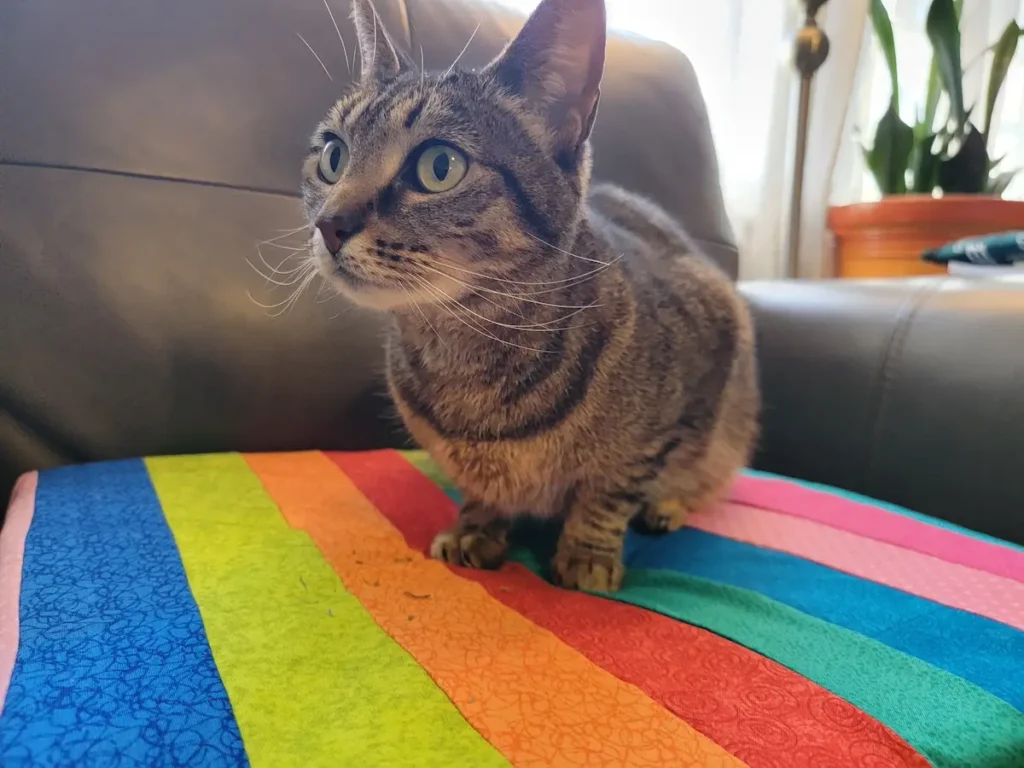
What’s your number one tip for finishing the UFOs lurking in everyone’s stash?
It’s hard to narrow down the UFO tips!
Everyone is so different, and I try not to make people feel like “finishing” is the only option. You can get rid of any project you want to—in fact, I know people who love using other people’s orphan blocks.
If pressed, I’d say that figuring out why your UFOs are UFOs will really affect how you approach them and how you decide on future projects. When you find a common thread that runs through a lot of your UFOs, you can figure out how to overcome or work with that particular stumbling block, and you can figure out how to avoid it in the future.
That’s the tip: take a good, hard look at your Quilty Area 51 and examine the reasons for every UFO in it. Then set aside time on your calendar to actually do something about it.
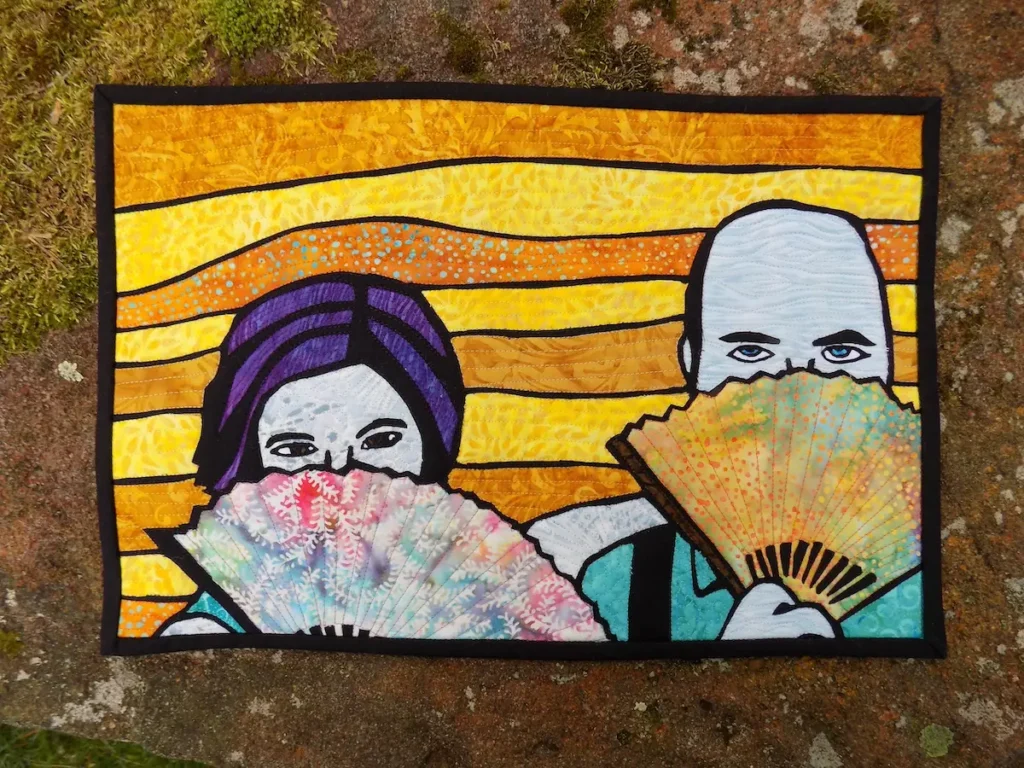
Walk us through your process. You get an idea, then what?
Oof. My process isn’t particularly organized. I work intuitively most of the time and adjust accordingly.
Sometimes I sketch an idea on paper, sometimes I play with blocks on EQ8, sometimes I start drawing with Adobe Illustrator. Everything eventually gets drawn on Illustrator, where I can play with scale and recolor everything pretty easily. There’s usually a “cooling off” period when I don’t look at the project for at least a few days, then return with fresh eyes.
I always make at least one sample myself—sometimes before writing instructions, sometimes after. It depends on whether or not I’ve written anything similar before.
What part of quilting do you enjoy the most? What part do you find challenging?
I love choosing fabrics and piecing and stitching down binding by hand—it’s all so satisfying to see how things come together.
The most challenging part for me is deciding how to quilt a top. I get very anxious about “ruining” all of the work I’ve done. What I’ve done to deal with that mental block is learn a couple of walking foot techniques that are pretty versatile and easy to modify, and when I’m in doubt, I use one of those—there are a lot of straight lines and big spirals in my quilting!
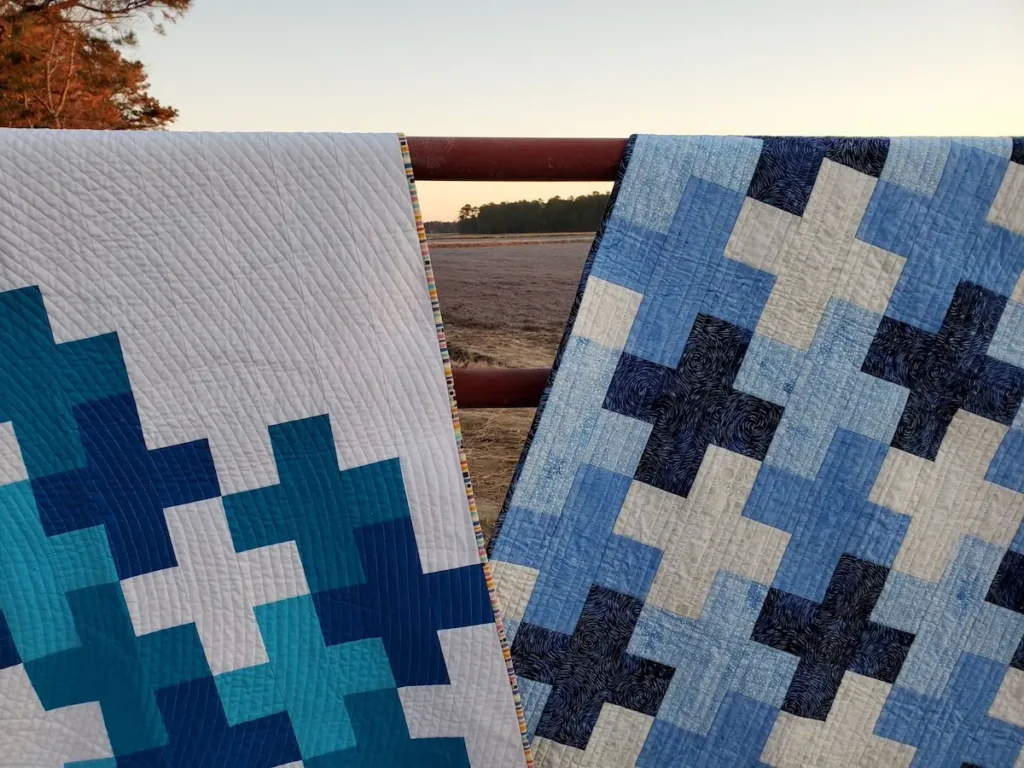
Tell us about a project that didn’t go as planned. What did you do? Did you learn anything?
For several years, I had a longarm quilting machine (it has since moved on to a more dedicated and talented quilter). There was a top that I’d pieced from a kit I’d picked up on a shop hop, and I decided to fill in a bunch of sections with pebbling. I love pebbling! It’s so much fun to do and adds great texture. However, this time, I didn’t realize for quite some time that the tension was off and the back of the quilt was a big old mess of thread.
When I figured it out, I really didn’t want to pick out all those tight little pebbles. I thought about it, and I realized that I didn’t really like that quilt anyway. I had enjoyed the process of making the top and had learned a few things doing it, but the colors didn’t work for me at all. I cut off the part with all the bad quilting on it and used the rest of the top to back art quilts and other wall hangings.
What I learned from this is that you don’t have to finish the same quilt that you start. If you’re not happy with how it’s going, you can modify it to make it something that does work for you. Maybe it’s a pieced back, maybe it’s placemats, maybe it’s just a smaller quilt, but if you don’t like where a project is going, you can definitely take it somewhere else.
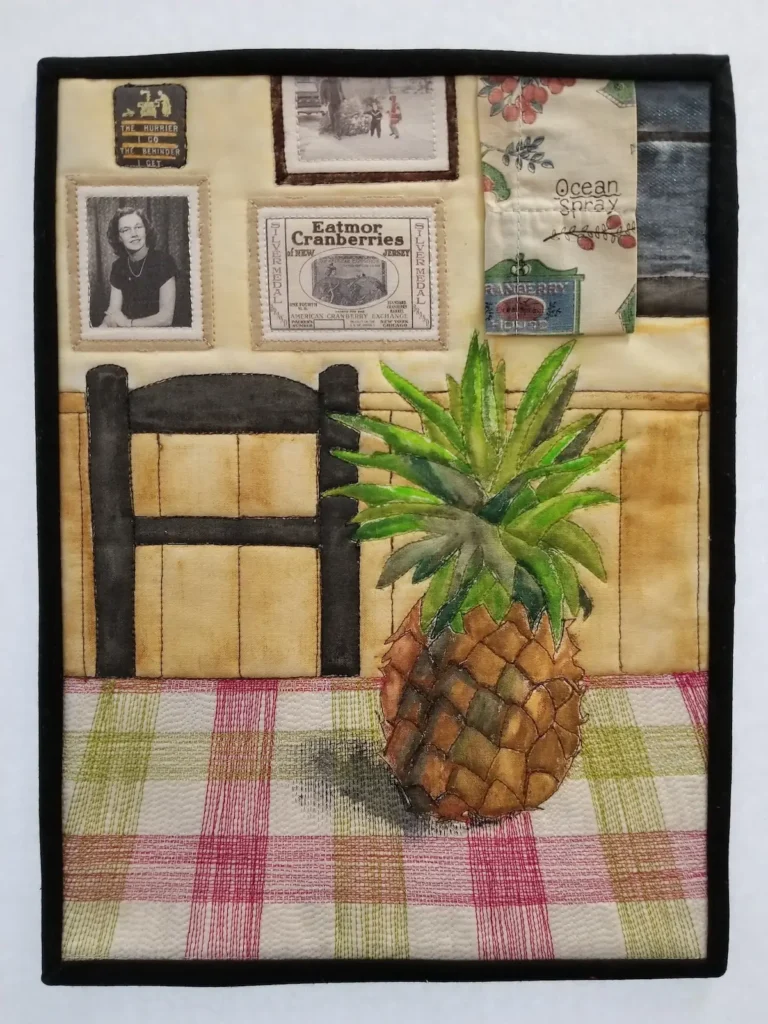
Do you start with a title? Or does the name for a quilt come after it is complete?
Usually the title arises as part of my internal storytelling process, and it might happen at any time. There’s always a working title from the very beginning—sometimes it sticks, sometimes it changes as the story develops.
How do you balance making your own work, designing patterns, and teaching?
I have to be deliberate in how I spend my sewing time, because otherwise it devolves into chaos.
When I go on a retreat or to a sew day, I usually designate that time specifically for personal projects, because they’re the first to fall by the wayside. Often, I will bring only UFOs.
When I need to focus on the not-sewing part of work, sometimes I’ll reserve a study room at the library. The best thing I’ve been able to do for the past few years is to hold what I call my “Annual Executive Retreat” and go away for a few days by myself.
In the past I’ve gone to a little Airbnb studio on the bay, not far from home, but we have a little camper now that I can use. I write out an agenda and prepare a binder full of supporting documents, and spend some quality time reviewing how everything is going, then I use all of that to figure out what I’m going to do next. It’s incredibly helpful to compartmentalize my time.
What do you wish you had known when you first started quilting?
I wish I had realized earlier that you don’t have to finish the same quilt that you started. If you’re working on a project that doesn’t sing to you, go ahead and change it to suit your needs—make it a smaller quilt, or use it as a backing, or turn it into potholders or pet beds or whatever else you can think of…or just get rid of it!
We all have more than enough quilts that we want to make. Why waste our precious time and energy on something that feels like a drag? This became easier for me when I realized that some projects are more about the process than the finished object.
I love attending workshops and working on blocks of the month, but I don’t always love the end results. So if I got what I wanted—fellowship with other quilters, trying a new technique, whatever—then I’ve already achieved what I set out to do, and I can move on.
How do you weave quilting time into life on a farm?
I didn’t start quilting until after I stopped working on the farm—I’m not sure I could have juggled both! Farming and raising a young family was hard enough.
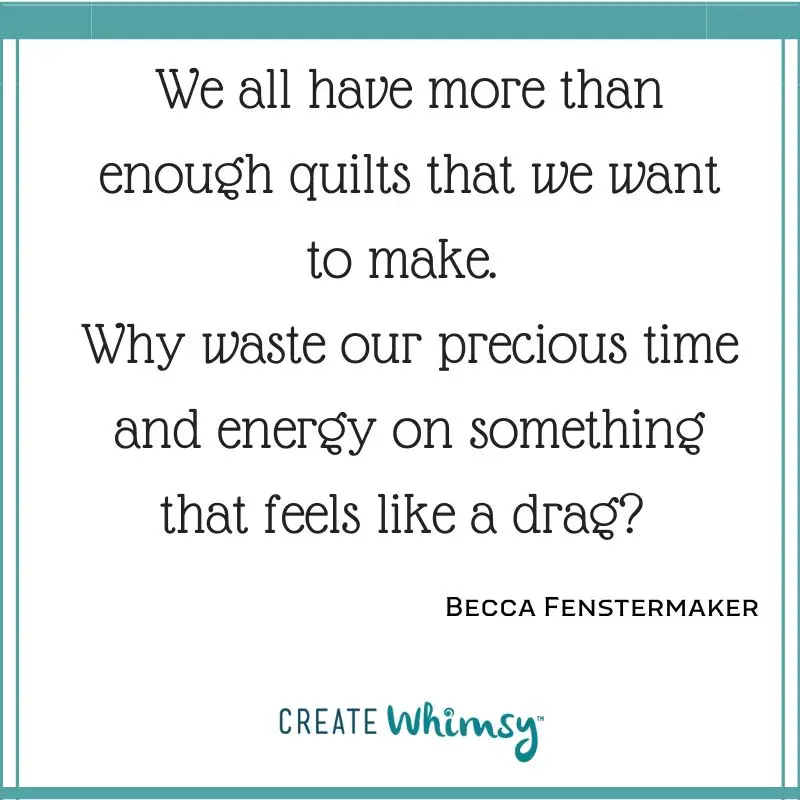
What do you hope happens when someone makes a quilt from your design?
I hope they’re not afraid to make it their own. I love seeing one of my patterns made in different fabrics or with the quilter’s own spin on it.
Using a pattern as a spark for individual creativity is one of the most beautiful quilting traditions. It’s truly heartwarming to see pictures of quilts being used and loved, so I always look forward to quilters tagging me on social media or emailing their photos to show me their gorgeous work…especially when it’s loved and appreciated by others.
Where can people see your work?
My website is SugarSandQuilts.com. You can find me on YouTube at www.youtube.com/@sugarsandquilts and Instagram (as well as other social media sites) as @sugarsandquilter.
Interview posted November 2025
Browse through more quilt inspiration on Create Whimsy.

